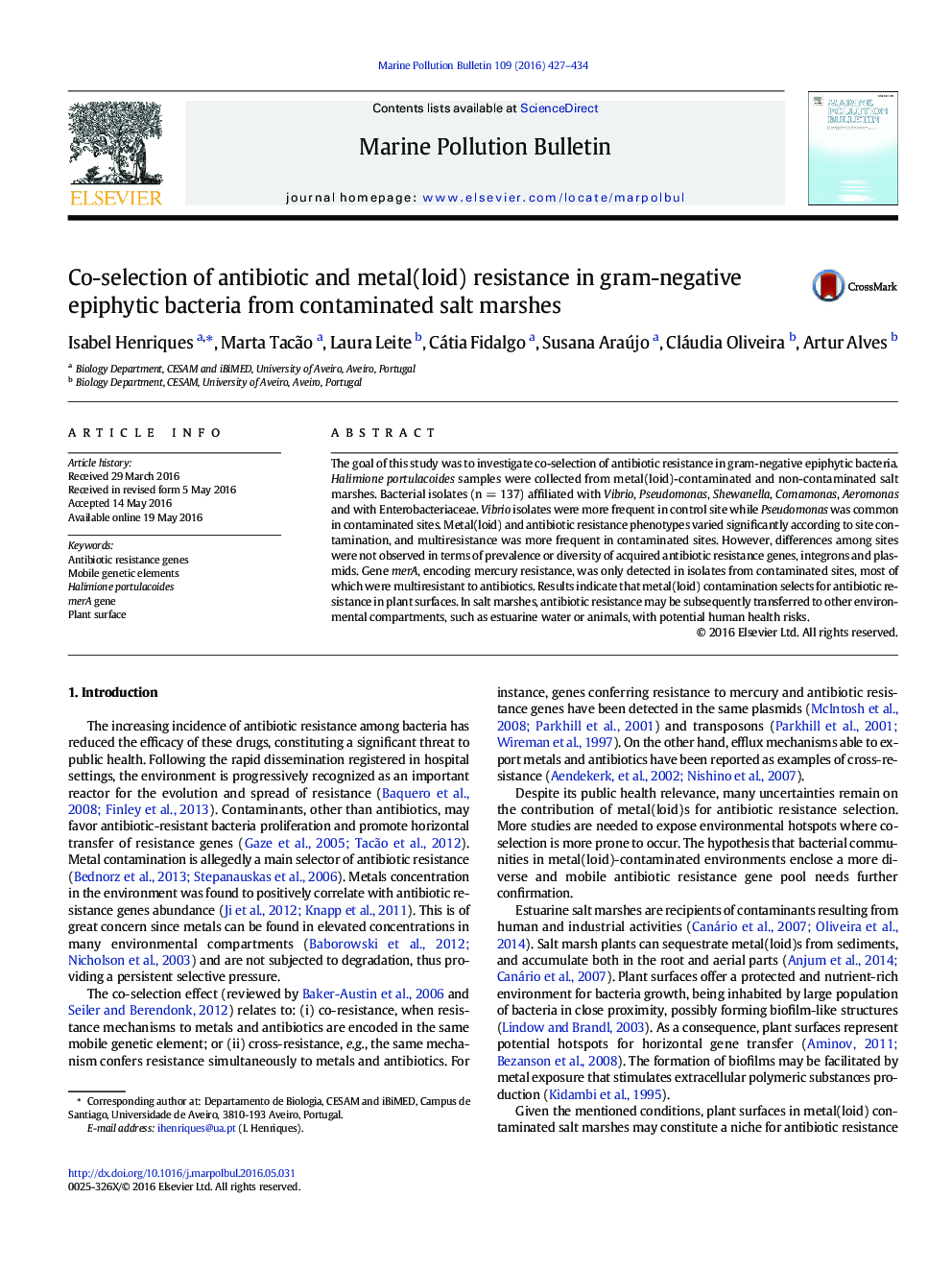| Article ID | Journal | Published Year | Pages | File Type |
|---|---|---|---|---|
| 4476420 | Marine Pollution Bulletin | 2016 | 8 Pages |
•Salt marsh plants can sequestrate and accumulate metals.•We studied antibiotic resistance in bacteria from a metal-accumulator plant.•Metal contamination selects for antibiotic resistance in epiphytic bacteria.•Multiresistance to antibiotics was higher in bacteria from polluted sites.•We expose plant surface as a niche where co-selection of resistance occurs.
The goal of this study was to investigate co-selection of antibiotic resistance in gram-negative epiphytic bacteria. Halimione portulacoides samples were collected from metal(loid)-contaminated and non-contaminated salt marshes. Bacterial isolates (n = 137) affiliated with Vibrio, Pseudomonas, Shewanella, Comamonas, Aeromonas and with Enterobacteriaceae. Vibrio isolates were more frequent in control site while Pseudomonas was common in contaminated sites. Metal(loid) and antibiotic resistance phenotypes varied significantly according to site contamination, and multiresistance was more frequent in contaminated sites. However, differences among sites were not observed in terms of prevalence or diversity of acquired antibiotic resistance genes, integrons and plasmids. Gene merA, encoding mercury resistance, was only detected in isolates from contaminated sites, most of which were multiresistant to antibiotics. Results indicate that metal(loid) contamination selects for antibiotic resistance in plant surfaces. In salt marshes, antibiotic resistance may be subsequently transferred to other environmental compartments, such as estuarine water or animals, with potential human health risks.
Graphical abstractFigure optionsDownload full-size imageDownload as PowerPoint slide
